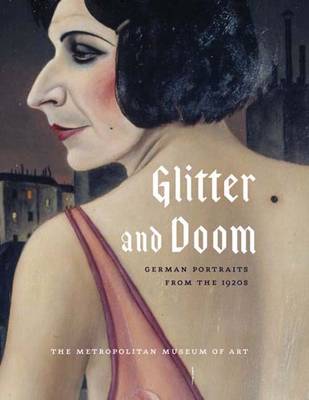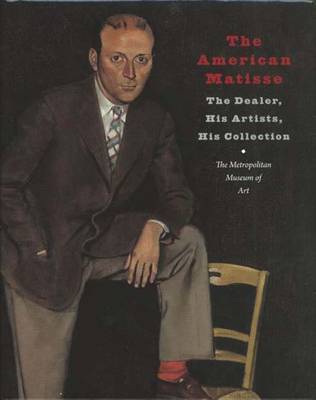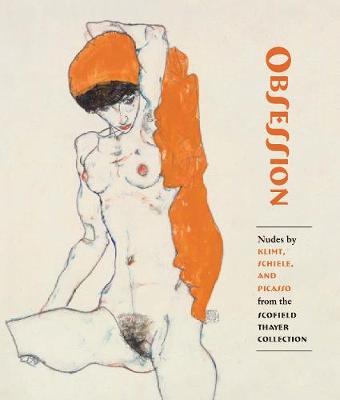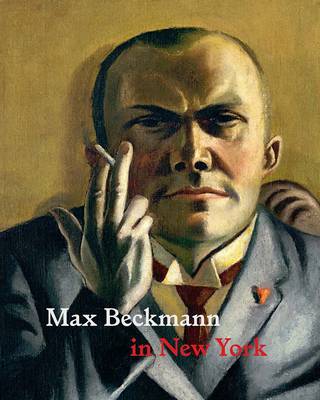Metropolitan Museum of Art
6 total works
During the first half of the 19th century, the open window emerged as a consistent motif in German, Danish, French, and Russian art. "Rooms with a View" is the first book to explore this intriguing theme in European art, with its Romantic intimations of unfulfilled longing and its associated qualities of poetry, luminosity, and interiority. Artists depicted this intangible mood with images of contemplative figures in hushed, sparely furnished rooms; painters diligently at work in their studios; simple, serene displays of light entering a chamber; and, windows as the focal point of views in their own right. "Rooms with a View" features forty oils and thirty works on paper by both well-known and largely undiscovered artists, including Caspar David Friedrich, Carl Gustav Carus, Georg Friedrich Kersting, Adolph Menzel, Christoffer Wilhelm Eckersberg, Martinus Rorbye, Jean Alaux, Leon Cogniet, and Fyodor Petrovich Tolstoy.
In the 1920s, Germany was in the grip of social and political turmoil: its citizens were disillusioned by defeat in World War I, the failure of revolution, the disintegration of their social system, and inflation of rampant proportions. Curiously, as this important book shows, these years of upheaval were also a time of creative ferment and innovative accomplishment in literature, theatre, film, and art. "Glitter and Doom" is the first publication to focus exclusively on portraits dating from the short-lived Weimar Republic. It features forty paintings and sixty drawings by key artists, including Otto Dix, Max Beckmann, and George Grosz. Their works epitomize Neue Sachlichkeit (New Objectivity), in particular the branch of that new form of realism called Verism, which took as its subject contemporary phenomena such as war, social problems, and moral decay. Subjects of their incisive portraits are the artists' own contemporaries: actors, poets, prostitutes, and profiteers, as well as doctors, lawyers, businessmen, and other respectable citizens.
The accompanying texts reveal how these portraits hold up a mirror to the glittering, vital, doomed society that was obliterated when Hitler came to power.
The accompanying texts reveal how these portraits hold up a mirror to the glittering, vital, doomed society that was obliterated when Hitler came to power.
Caspar David Friedrich (1774-1840), a major figure in the German Romantic movement, painted sublime works representing nature at its most melancholic and desolate. One of his most famous motifs was that of two intimate figures, seen from behind, gazing at the moon. Friedrich painted three versions of this theme, one of which -"Two Men Contemplating the Moon" - has been acquired by The Metropolitan Museum of Art. The text discusses the Metropolitan's painting in conjunction with the other two versions and a number of related paintings and drawings by Friedrich and his Dresden friends. It also presents fascinating details about the moon itself - including what was known about it in Friedrich's lifetime and its presence and symbolism in contemporary Romantic poetry.
In a career spanning over six decades, the New York art dealer Pierre Matisse (1900--1989) contributed substantially to the advancement of modern art. At his eponymous gallery on East Fifty-seventh Street, he showed several now legendary artists for the first time outside Europe. The collection--paintings, sculpture, and drawings by Balthus, Bonnard, Chagall, Derain, Dubuffet, Giacometti, Magritte, Miro, and the dealer's own father, Henri Matisse, among others--was donated to The Metropolitan Museum of Art in 2004 by the foundation established by his widow. These extraordinary artworks are presented with informative entries addressing the circumstances of each work's creation and the dealer's relationship to the artist. In the introduction, the story of Pierre Matisse's early struggles in New York is told for the first time and illustrated with previously unpublished archival photographs.
Evocative and often highly erotic works on paper by Gustav Klimt, Egon Schiele, and Pablo Picasso are presented along with new details about Scofield Thayer (1889–1982), the unusual and complicated man who collected them. Thayer was a wealthy publisher, poet, and aesthete who led an intense public life that included the editorship of the prominent literary journal The Dial and friendships with literary luminaries such as e. e. cummings. In the 1920s, Thayer went on an art-buying spree in London, Paris, Berlin, and Vienna, acquiring approximately 600 works of art. Among these are particularly provocative drawings and watercolors by Klimt, Schiele, and Picasso, at a time when these works were little known or appreciated. This book showcases 52 of the rarely seen works—which have now taken their place as modernist erotic masterpieces—and presents them within the context of the collector’s remarkable life and tempestuous times.
Published by The Metropolitan Museum of Art / Distributed by Yale University Press
Published by The Metropolitan Museum of Art / Distributed by Yale University Press
Exhibition Schedule:
The Met Breuer
(07/03/18–10/07/18)
An up close and personal look at the life and work of a major 20th-century artist
The prominent German Expressionist painter Max Beckmann (1884–1950) is known for allegorical, autobiographical works that capture the doom and grotesquerie of World War I and the subsequent rise of Nazism. In 1937, under threat by the Nazi regime (which featured Beckmann’s work prominently in the notorious “Degenerate Art” exhibition that year), he and his wife relocated, first to Amsterdam, then to St. Louis, and eventually to New York City, where Beckmann died less than one year later. This revealing book focuses on the works produced during Beckmann’s final years and other pieces by the artist now found in New York collections.
Throughout his prolific career, Beckmann maintained a firm loyalty to representational painting, asserting his purpose to “get hold of the magic of reality and to transfer this reality into painting.” The deft and subtle layers of color and shadow, figures and allusions in his work resulted in captivating narrative images. Presenting a mesmerizing portrait of one of the 20th century’s most enigmatic and challenging artists, Max Beckmann in New York features beautiful reproductions of Beckmann’s remarkable artworks, accompanied by an engaging essay by acclaimed art historian Sabine Rewald that contextualizes his paintings and provides insight into his tumultuous life.
Published by The Metropolitan Museum of Art / Distributed by Yale University Press
The prominent German Expressionist painter Max Beckmann (1884–1950) is known for allegorical, autobiographical works that capture the doom and grotesquerie of World War I and the subsequent rise of Nazism. In 1937, under threat by the Nazi regime (which featured Beckmann’s work prominently in the notorious “Degenerate Art” exhibition that year), he and his wife relocated, first to Amsterdam, then to St. Louis, and eventually to New York City, where Beckmann died less than one year later. This revealing book focuses on the works produced during Beckmann’s final years and other pieces by the artist now found in New York collections.
Throughout his prolific career, Beckmann maintained a firm loyalty to representational painting, asserting his purpose to “get hold of the magic of reality and to transfer this reality into painting.” The deft and subtle layers of color and shadow, figures and allusions in his work resulted in captivating narrative images. Presenting a mesmerizing portrait of one of the 20th century’s most enigmatic and challenging artists, Max Beckmann in New York features beautiful reproductions of Beckmann’s remarkable artworks, accompanied by an engaging essay by acclaimed art historian Sabine Rewald that contextualizes his paintings and provides insight into his tumultuous life.
Published by The Metropolitan Museum of Art / Distributed by Yale University Press
Exhibition Schedule:
The Metropolitan Museum of Art
(10/18/16–02/20/17)





